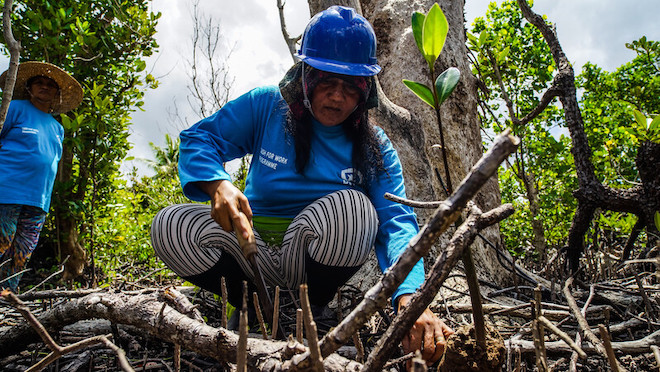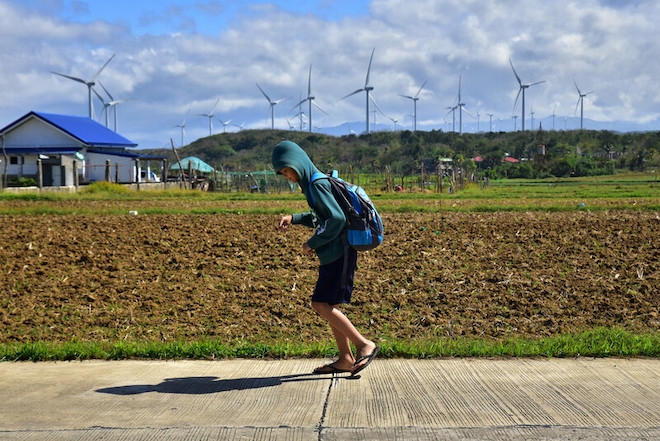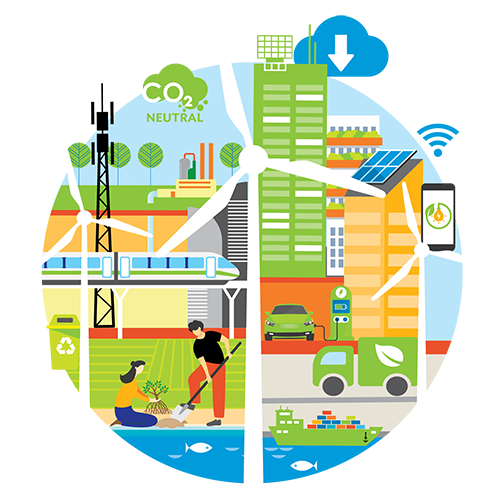
This article is published in collaboration with Google and Asian Venture Philanthropy Network (AVPN).
The United Nations Climate Change Conference late last year in Egypt brought back the focus on how climate change is disrupting sustainable development for communities across the globe, particularly in the Asia and the Pacific.
The region is highly vulnerable to the effects of climate change and is increasingly facing severe consequences because of it.
Solemn reminders
The past 12 months have provided clear reminders of the solemn impact of climate change. From flooding in Pakistan, extreme drought in the People's Republic of China, and tropical cyclones in Pacific island nations to typhoons in the Philippines, hundreds of millions of poor, vulnerable people were severely impacted.
Yet combating climate change remains a challenge for Asia-Pacific communities as they seek to balance climate protection with economic development.
Economic recovery and growth are key priorities as the region needs to reverse the socioeconomic damage caused by the pandemic. At the same time, the region needs to address its pressing developmental challenges such as gender disparities, low levels of education, and income inequality.
At the same time, the Asia-Pacific region is a major contributor to the world's greenhouse gas emissions and cannot be left out of efforts to prevent a 1.5ºC rise in global temperatures to forestall even more severe climate change devastation.
It is important to consider indigenous coping strategies, which can sometimes be the most reliable and sustainable form of climate change response. Indeed, modern-day green technologies can take inspiration from indigenous practices.
For example, in flood and drought-prone areas of Bangladesh, such techniques have included floating seedbeds for waterlogged conditions, the construction of floating platforms for use as cattle refuges during floods, earthen embankments supported by bamboo fences and grass planting to reduce flood erosion, water drainage systems around homesteads to prevent salination of the soil, early cyclone warning systems in coastal areas, and shifting cultivation times to avoid floods.
Climate technologies can also aid in the transition toward net-zero carbon emissions by reducing the upfront cost of wind and solar generation units. This can in turn reduce the gap in the levelized cost of energy—a measure that takes account of lifetime costs including installation, operation, and maintenance—between these renewable power sources and those of natural gas and coal.
The carbon emissions reduction potential of using biofuel in vehicles, meanwhile, can be realized by implementing the complementary strategy of promoting electric vehicles in countries like India, Indonesia, and Thailand.

Green growth as a path to a sustainable future
Countries in the Global South are exploring the concept of green growth as a path to a sustainable future. Green growth and green innovation entail fostering economic growth and development while ensuring that natural assets continue to provide the resources and environmental services on which our well-being relies. To do so, they must catalyze investment and innovation to underpin sustained growth and give rise to new economic opportunities.
Sustainable finance can help in facilitating the implementation of solutions created through green innovation. Green innovations and emerging technologies have led to the development of climate-friendly solutions such as farming seaweed for biofuel with sensor-driven zones, solar-collecting fabric, and elevator generators. Without adequate financing, these green innovations that could potentially save the planet would have never seen the light of day.
The Google.org Impact Challenge on Climate Innovation, a fund run by Google, has committed $30 million to fund projects that accelerate technological advances in climate information and action.
The Asian Venture Philanthropy Network (AVPN), meanwhile, has recognized that Southeast Asian countries are looking to raise sustainable finance to ensure their transition into low-carbon economies and to create transparency and accountability in financial flows.
In this regard, organizations like the AVPN, with support from Google.org and the Asian Development Bank (ADB), launched the APAC Sustainability Seed Fund that looks toward enabling local innovations to address the climate crisis.
The fund will provide grants for scaling up nonprofit technology innovations in areas like increasing access to renewable energy and decarbonization, improving air quality, and water conservation.
The rise of climate philanthropy
More broadly, philanthropic organizations in Asia are taking an increasingly structured approach to address systemic barriers to solving social and environmental problems by working more collaboratively with all relevant stakeholders in developing solutions.
The ADB, for example, is looking at directing sustainable finance to women across Asia to fight climate change.
Climate philanthropy is nascent yet growing in Asia, and there are promising signs of innovative approaches, particularly among next-generation wealth holders. Supporting national and regional initiatives including forums such as the Group of 20 where governments have already made commitments is an approach that can give philanthropists the confidence and impetus to support climate initiatives in Asia.
Private-sector capital also needs to play a bigger role in climate finance including the adoption of innovative financial instruments. Governments must provide incentives for the private sector to move from monetary return-driven investments to impact investments generating social and environmental value.
To build a strong response toward tackling climate change in Asia, a comprehensive strategy needs to be built that puts investing in green technology at the forefront. To achieve our sustainability goals, we need to invest in green technologies to optimize water consumption, improve air quality, ensure energy security and biodiversity, and reduce our carbon footprint.
 Marija Ralic
Marija Ralic
Lead, Google.org, Google APAC
Marija Ralic manages Google's philanthropic work across Asia and the Pacific to support innovative nonprofits using technology to tackle complex global challenges. She works with teams across the region to bring the best of Google to help solve some of humanity’s biggest challenges—combining funding, innovation, and technical expertise to support underserved communities and provide opportunity for everyone. Before Google, Marija served as a regional program manager overseeing the philanthropic programs at Microsoft Philanthropies across 17 countries and 20 countries in the Asia-Pacific and Central and Eastern Europe, respectively.
 Tristan Ace
Tristan Ace
Chief Program Officer, Asian Venture Philanthropy Network.
Tristan Ace is an economic development professional with over 13 years experience including 8 in Asia (People's Republic of China; Hong Kong, China; and Myanmar). He has experience working directly with numerous governments to support policy learning, development, and implementation. He developed partnerships with bilateral and multilateral agencies to build large-scale multi-country economic development programs, and worked with numerous corporations to develop and implement sustainability and corporate social responsibility strategies.
This op-ed was first published by Nikkei Asia on 14 February 2023.

